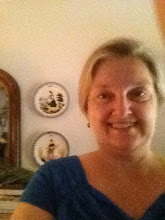
April 1, 2009, Cuddesdon
On one of the last days we were in the south of England, we decided to venture to the west to see the Mappa Mundi, the oldest complete map of the world in Europe if not the world. Created by a medieval monk in Lincolnshire, it is now housed behind thick glass in a special fire and earthquake proof safe beside Hereford Cathedral. As we entered the dimly lit room we saw the pale trapezoidal shape of the skin filled with a great dark circle. The circle itself was filled with all kinds of cartography – oceans were dark, the land masses pale, the islands in the Aegean filling most of the lower half of the map whose center was Jerusalem. Surrounding the busy circle was the realm of the heavens, and at the apex of the piece of vellum was Jesus on his throne. In the bottom left corner the maker of the map pictured himself kneeling. Next to his own figure, he wrote the words, “pray for me.”
From a distance the Mappa Mundi reminded me of a page in an old biology book I saw at an antiquarian bookseller. In this biology book the pages had turned creamy with age like the vellum. The black and white circle in the book illustration stood in contrast to the surrounding text not only because of its size and shape, but also because it looked like a pen and ink drawing where the typeface had a more mechanically produced appearance. The contrast between the type and the picture was jarring. The words themselves seemed like a kind of code on the page, rigid and methodical. The drawing seemed more visceral.
The cell was a doorway to understanding life itself. The cell was not completely understood, but the attempt to make what was known understood was made by using a drawing because the precision and abstractness of words were inadequate to describe this understanding. The Mappa Mundi was a similar attempt to describe what the map maker knew about something not completely understood – the world. Like the cell illustrator, the maker of the map located the known lands and people within the dark circle of his world. In drawing the space the map maker ordered the universe – like a single cell. The nucleus Jerusalem, the walls surrounded by the forces that ruled its world. The perfect circle declared the border of this world as if to say, “This is where human understanding ceases and the understanding of God begins.
The attempt of the author to organize his world into some kind of order is something I look on with a certain amount of wonder. Unitary constructs are so neat - like the lady we overheard in the tea shop trying to organize all the "isms" of the world along a continuum for her daughter. It is tempting to rationalize the world into a line or a “circle.” I also feel a certain amount of affection for the author. I try to order my little world every day and ,with some rare exceptions, it never “turns out like the drawing”. So I feel I understand the urge of the map maker as I think we all can. Granted, the scale of the project - ordering the universe and placing God in his heaven does seem rather a tall order. No wonder the map maker asked us to pray for him. Craig and I miss all who normally inhabit our world, a world that doesn't even make it into the map maker's imagination. I wonder what he would think?

No comments:
Post a Comment